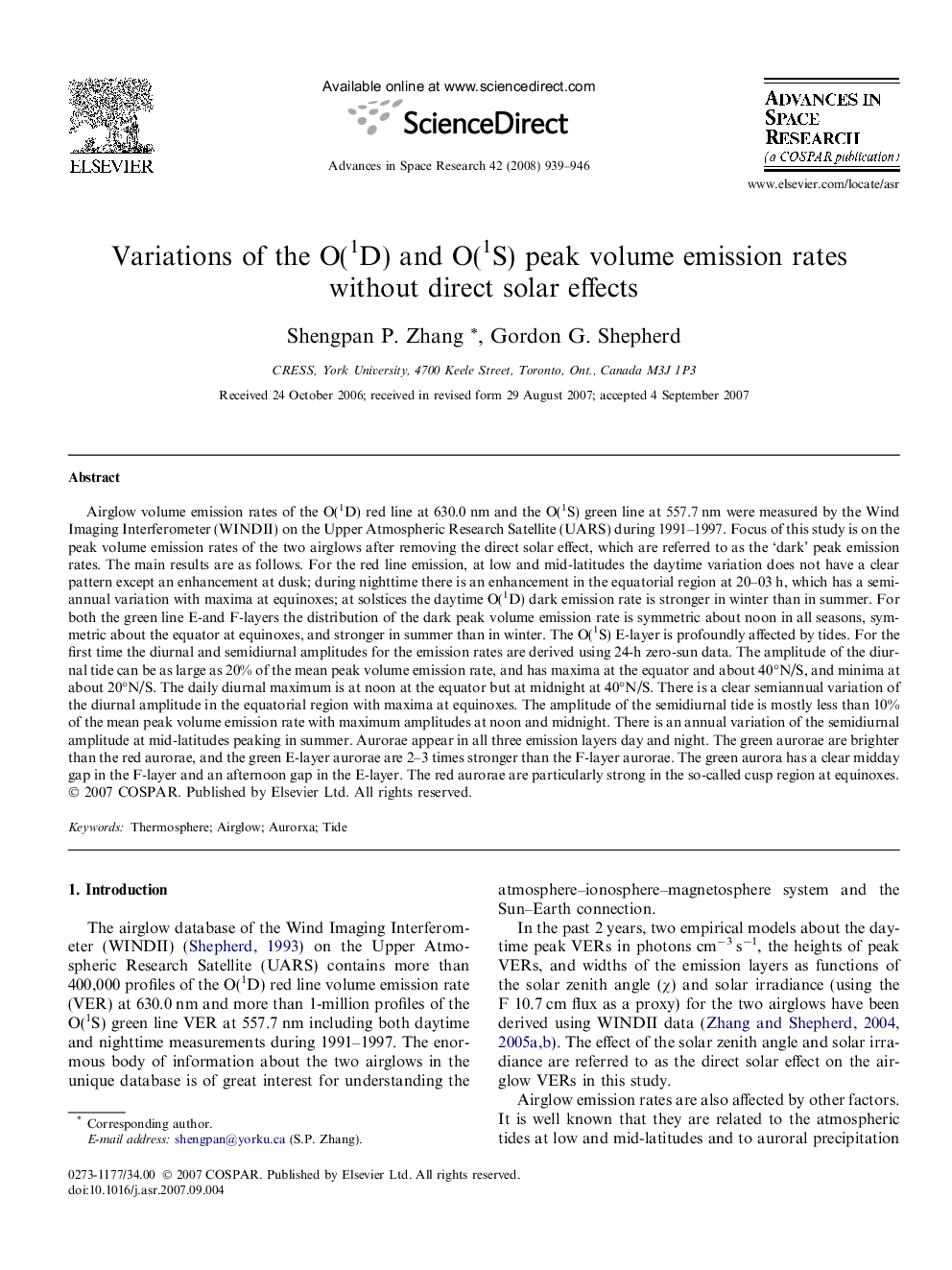| کد مقاله | کد نشریه | سال انتشار | مقاله انگلیسی | نسخه تمام متن |
|---|---|---|---|---|
| 1767654 | 1020199 | 2008 | 8 صفحه PDF | دانلود رایگان |

Airglow volume emission rates of the O(1D) red line at 630.0 nm and the O(1S) green line at 557.7 nm were measured by the Wind Imaging Interferometer (WINDII) on the Upper Atmospheric Research Satellite (UARS) during 1991–1997. Focus of this study is on the peak volume emission rates of the two airglows after removing the direct solar effect, which are referred to as the ‘dark’ peak emission rates. The main results are as follows. For the red line emission, at low and mid-latitudes the daytime variation does not have a clear pattern except an enhancement at dusk; during nighttime there is an enhancement in the equatorial region at 20–03 h, which has a semiannual variation with maxima at equinoxes; at solstices the daytime O(1D) dark emission rate is stronger in winter than in summer. For both the green line E-and F-layers the distribution of the dark peak volume emission rate is symmetric about noon in all seasons, symmetric about the equator at equinoxes, and stronger in summer than in winter. The O(1S) E-layer is profoundly affected by tides. For the first time the diurnal and semidiurnal amplitudes for the emission rates are derived using 24-h zero-sun data. The amplitude of the diurnal tide can be as large as 20% of the mean peak volume emission rate, and has maxima at the equator and about 40°N/S, and minima at about 20°N/S. The daily diurnal maximum is at noon at the equator but at midnight at 40°N/S. There is a clear semiannual variation of the diurnal amplitude in the equatorial region with maxima at equinoxes. The amplitude of the semidiurnal tide is mostly less than 10% of the mean peak volume emission rate with maximum amplitudes at noon and midnight. There is an annual variation of the semidiurnal amplitude at mid-latitudes peaking in summer. Aurorae appear in all three emission layers day and night. The green aurorae are brighter than the red aurorae, and the green E-layer aurorae are 2–3 times stronger than the F-layer aurorae. The green aurora has a clear midday gap in the F-layer and an afternoon gap in the E-layer. The red aurorae are particularly strong in the so-called cusp region at equinoxes.
Journal: Advances in Space Research - Volume 42, Issue 5, 1 September 2008, Pages 939–946